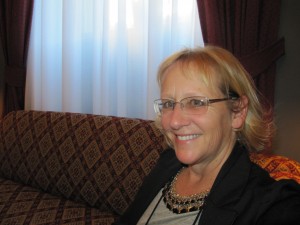Imagine this: You decide to have a child and you visit a health clinic. The clinician asks, “Do you want a boy or girl? Which hair color do you prefer? Do you have a preference for curly or straight hair?” The ability to design a human may seem like science fiction, but today’s students may face these decisions as adults.
Our students need to be prepared for a future with these kinds of choices. This is the primary reason I teach with an emphasis on project-based learning and independent thinking. Each year that I teach genetics to seventh graders, the students become immersed in a genetics court case of the not-so-distant future:
It is the year 2035. Jenn Ettics, age fifteen, is suing her parents, Carmella and Tony Ettics, for genetically modifying her at birth. Jenn’s parents hired Chromo Labs to have her genetically modified so she would have more favorable “athletic genes.” Jenn claims that this manipulation had a deleterious effect on her “artistic genes,” so she is suing for emancipation and $1million in damages.
Here are the players: Jenn, her lawyers and Guardian Ad Litem (court assigned guardian), the P.A.G.E. Foundation (People Against Genetic Engineering) to support Jenn, Chromo Lab Director, scientists and lawyers to support their company and the defendants, Jenn’s parents with their lawyers. Reporters and photographers also play a role.
Using their knowledge of genetics, students create all of the evidence in the court case. Each group must work together to gather enough evidence to demonstrate to the jury (former students) that they should win the case.
Not only must the students have a strong genetics background, they must also understand what kind of evidence will support their claim. Each year, I am overwhelmed with the evidence created and the students’ abilities to defend their position in the court setting. I have collected dozens of student strategies. Here is a sample:
Punnett squares demonstrate that Jenn should have been artistic. The location of “artistic” and “athletic” genes imply a low probability that the manipulation of one would affect the other. Data show that Chromo Labs had more errors during the year Jenn was manipulated. The defendants’ (parents) lawyers reveal other relatives with medical problems that led to the alteration of Jenn’s athletic genes to make her more healthy.
As you can see, the potential for evidence is endless on both sides. The beauty of this experience is that it really gets students to think, to use their knowledge to defend a position and to consider real science issues they may face as adults. Based on the professional dress and serious demeanor I see during the court case, the students are completely engaged and learn from each other. The emotions are high; sometimes students have shed tears when the verdict is read.
This kind of project-based learning is important. Students need to be engaged in a way that is meaningful, draws on their ability to apply knowledge and think independently. What other learning situation will better prepare them for the future?
Maria Palopoli
Maria Palopoli teaches in Brunswick, Maine. She earned a 2009 Presidential Award for Excellence Teaching Math and Science (PAEMST).







I am not the person to talk to about how to teach kids science in a way to get children to take note and learn, but I think I know who is. My son’s science teacher last year took him from no interest in the subject prior to entering his class room to being excited daily about what was going on the the classroom. He came home and would tell me about what was going on in class and how his teacher had challenged them to see who could come up with the best hovercraft made from a compact disc to telling me about Newton’s Law of Motion. His teacher made it his business to get the students motivated about learning and showed that he cared by everything his did during class and by spending extra time outside of what he was getting paid for to help the students personally on weekends and before and after school. My son wanted to go to school on weekends even to get help. He ended the year by building a hovercraft and presenting it at the science fair.
This teachers name is Jesse Andres teacher at Goodrich at Dawes Middle School in Lincoln, NE.